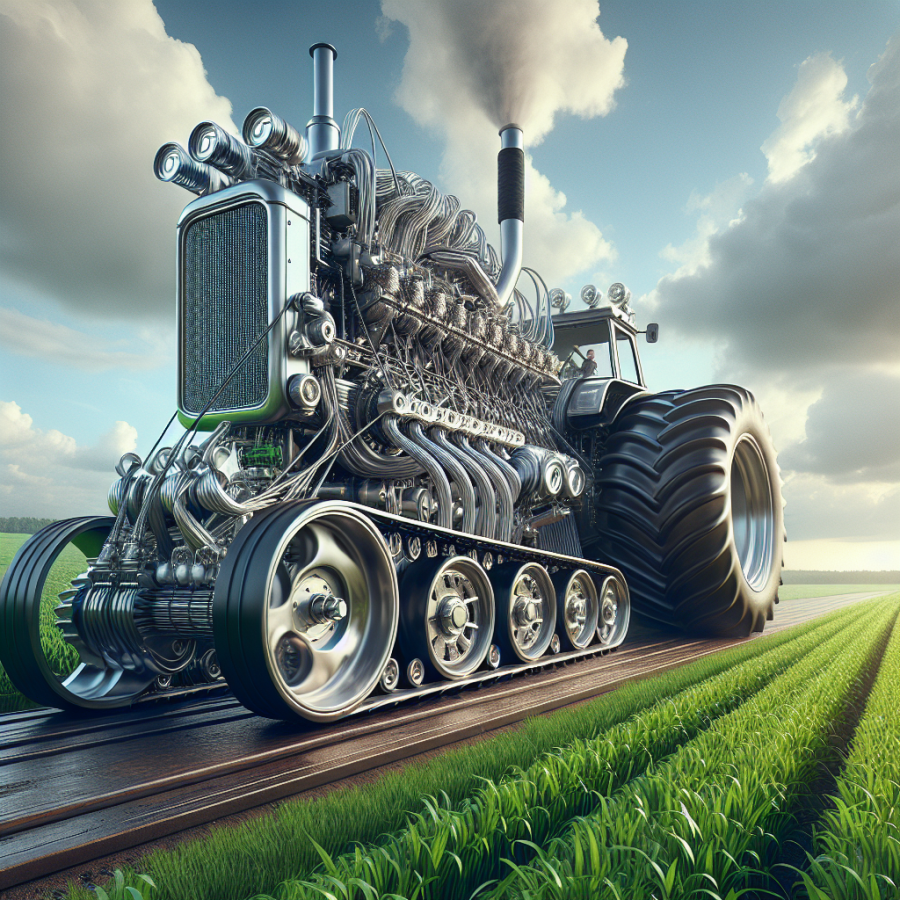Unleashing the Might of Machines: A Dive into Tractor Pull Competitions
Within the exhilarating realm of tractor pull competitions, enthusiasts and participants alike converge to test the limits of machine and engineering prowess. These events, centered around sheer mechanical strength and strategy, offer a spectacle where the might of machines is not just displayed but pushed to its towering peak.
Tractor pulling, at its core, is a showcase of torque and traction. Competitors must modify their tractors to drag a weighted sled down a designated tract of land, with the weights on the sled progressively increasing resistance the further the tractor travels. This test of endurance and power demands a high level of skill and fine-tuning, with participants often spending countless hours perfecting their machines.
The heart of any pulling tractor is its engine. The goal is to harness as much horsepower as possible to overcome the increasing weight of the sled. This requires an intricate balance between raw power and the finesse of weight distribution. Some classes allow for the use of multiple engines or even jet turbine power plants, turning these once-simple farm tools into behemoths of technology and innovation.
Modification is also a pivotal part of the competition. Tractor pull machines often feature reinforced frames, custom-built transmissions, cutting-edge fuel delivery systems, and meticulously crafted tires designed specifically for maximum grip. Each component plays a critical role in converting the engine's explosive energy into forward motion against the unyielding weight behind.
The traction is another area where technology and technique merge. The dirt track is far more than just a battlefield; it's a variable that can be both friend and foe to the competitors. Understanding the soil composition, moisture content, and how the track will change throughout the event can offer a significant edge. Drivers and their teams may tweak tire pressure, balance, and weight distribution in response to these conditions, striving for that perfect run where the might of their machine is fully unleashed.
Tuning is also an endless journey in the quest for supremacy in tractor pull competitions. As with any motorsport, the difference between victory and defeat can come down to the smallest adjustments. Engines are fine-tuned to the brink of their performance thresholds, with every spark of combustion examined for potential improvements. Electronics have been increasingly integrated into these machines, allowing for real-time adjustments and data analysis that can mean the difference between a good pull and a record-breaking one.
As the technology behind the tractors continues to evolve, so too does the sport itself.
Read also:
The Ultimate Team Swim Challenge: Mastering the Medley Relay
The Evolution of Tractor Pulling: From Farming Roots to Power-Packed Sporting Events
Tractor pulling, also known as power pulling, has come a long way from its humble beginnings. Originally a task performed on farms for moving heavy loads, it has evolved into a competitive sport that attracts enthusiasts from around the globe. The transformation of tractor pulling from a demonstration of raw utility to a display of mechanical prowess and engineering innovation reflects the sport's dynamic nature and the relentless pursuit of power and efficiency by its participants.
In the early days, farmers would boast about the strength of their horses or oxen, and informal competitions would arise to determine whose animals could pull the heaviest loads. As motorized vehicles replaced animal labor on farms, the first tractor pulling events began to emerge, pitting the power of these new machines against various heavy objects. The sport gained popularity throughout the 20th century, especially in rural America, where agricultural communities would gather to witness the might of modified farm tractors.
The competition format was simple: a weighted sled was dragged by a tractor, and weights on the sled would move forward as the tractor pulled, increasing the difficulty of the pull the further the tractor traveled. This tested not only the tractor's raw power but also the skill and strategy of the driver. Early tractors used in these pulls were typically off-the-shelf models with few modifications. Participants relied on their knowledge of the land and the machine to gain an edge over their competitors.
As interest in tractor pulling grew, so did the drive to win. Farmers and mechanics began to tinker with their machines to coax out more power and performance. Improvements in engine output, transmission, and traction led to the creation of specialized tractors designed exclusively for pulling. These machines no longer bore any resemblance to farm tractors but were instead custom-built behemoths with powerful, supercharged engines that could generate thousands of horsepower.
Advancements in tractor design and engineering continued to push the boundaries of what was possible. Multi-engine tractors with powerplants sourced from drag racing cars, trucks, and even helicopters became common sights at tractor pulls. Turbochargers, superchargers, and nitrous oxide injection became standard features, as competitors sought every possible advantage. Pulling tracks also evolved, offering better surfaces and more sophisticated weight transfer sleds, allowing for more consistent and safer competitive events.
Moreover, safety regulations and technological advancements necessitated the introduction of reinforced cages, kill switches, and better fire suppression systems, ensuring that the increasing power levels did not come at the expense of competitor or spectator safety.




